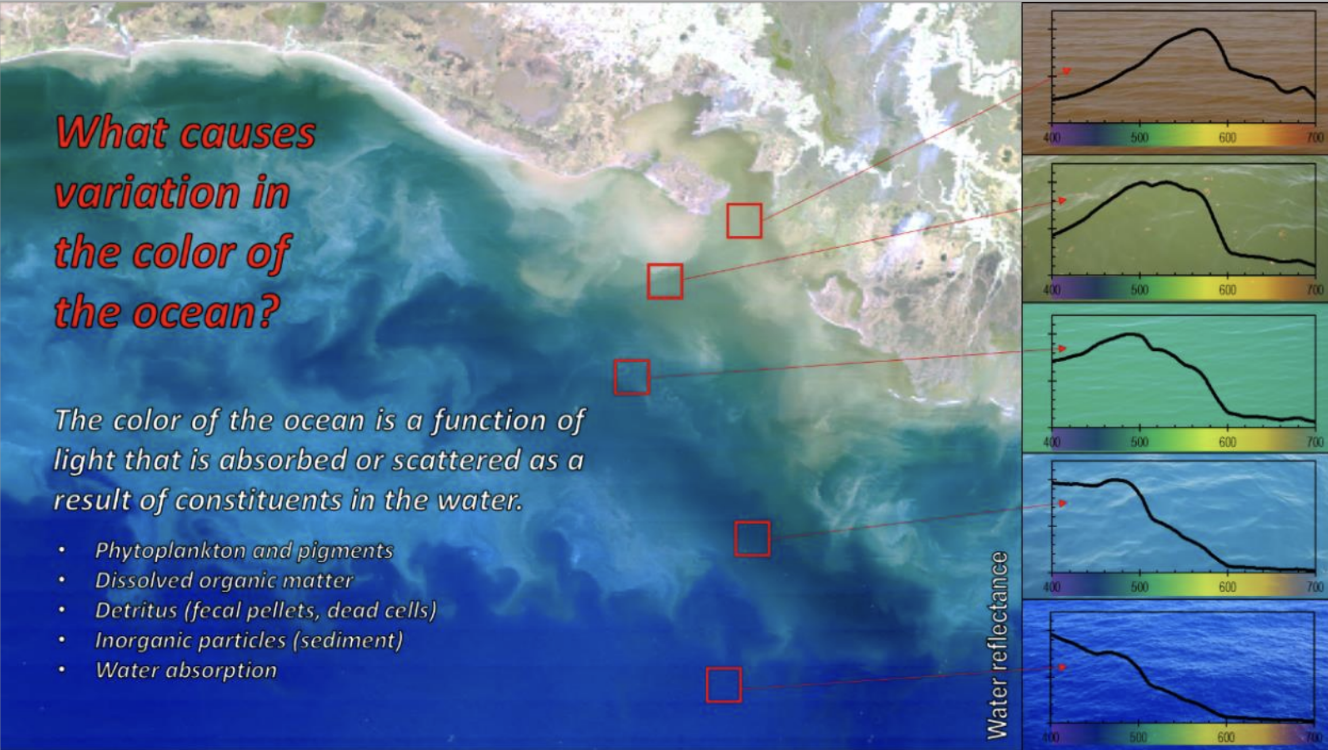3 Hyperspectral ocean color
Our heritage ocean color satellites detect anywhere from 5-10 wavelengths, which has limited our ability to distinguish some components from others. The launch of the Plankton, Aerosol, Cloud, and ocean Ecosystem (PACE) mission on February 8, 2024 introduced the satellite community to global hyperspectral measurements, meaning a spectrally continuous sampling of light (right panels Figure 3.1). This has afforded the opportunity to sense the ocean through an entirely new lens by being able to resolve previously undetectable, subtle features unique to e.g. a particular phytoplankton class, or other ocean constituents. NOAA will be expanding these hyperspectral ocean color capabilities well into the 2050s with the launch of GeoXO, which will offer an even newer perspective from a geostationary orbit, where we can revisit the same area several times per day.
What can we do with ocean color information? The widely used Chlorophyll-a estimates derived from remote-sensing data come from ocean color measurements. The estimates come from algorithms based on ratios of the intensity of reflected or absorbed light in different color bands which were derived from many studies of ocean color along with in-situ measurements of Chlorophyll-a. But this is just one or many products that we can derive from ocean color data. The Hyperspectral products section will familiarize you with the capabilities and nuances of available and emergent ocean color data products.
